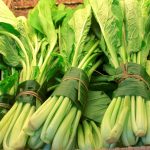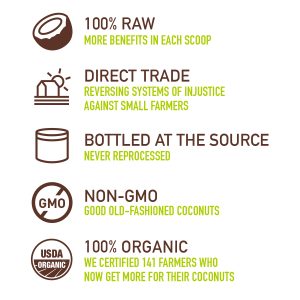The journey from farm to table involves a complex web of transportation, with food traveling vast distances to reach consumers. While this globalized food supply chain allows us to enjoy a diverse array of culinary delights, it also contributes significantly to the environmental footprint of our meals. In this article, we’ll explore effective strategies for reducing the environmental impact of food transportation in cooking, offering insights into sustainable practices that can be adopted at various stages of the supply chain.
1. Local Sourcing and Seasonal Eating:
a. Benefits:
- Reduced Carbon Emissions: By sourcing food locally, the distance traveled from farm to consumer is minimized, leading to lower carbon emissions associated with transportation.
- Support for Local Farmers: Embracing local and seasonal ingredients supports regional agriculture, contributing to the economic well-being of local farmers and communities.
b. Strategies:
- Farmers’ Markets: Explore local farmers’ markets for fresh, seasonal produce. These markets provide an opportunity to connect directly with local farmers and learn about the origin of your food.
- Community-Supported Agriculture (CSA): Joining a CSA program allows you to receive a regular supply of locally grown produce directly from a nearby farm.
- Seasonal Meal Planning: Plan your meals based on the seasonal availability of ingredients. Websites and apps provide guides on what fruits and vegetables are in season in your region.
2. Sustainable Transportation Methods:
a. Benefits:
- Lower Emissions: Opting for more sustainable transportation methods, such as electric vehicles or bicycles, can significantly reduce the carbon footprint associated with food delivery.
- Reduced Air Pollution: Choosing transportation methods that prioritize environmental sustainability helps minimize air pollution and its impact on local ecosystems.
b. Strategies:
- Electric Delivery Vehicles: Encourage the use of electric vehicles for food transportation, reducing reliance on fossil fuels and mitigating air pollution.
- Bicycle Couriers: In urban areas, explore the option of bicycle couriers for short-distance food delivery. This not only reduces emissions but also supports healthier and more sustainable transportation practices.
3. Efficient Supply Chain Management:
a. Benefits:
- Minimized Food Waste: Streamlining the supply chain and optimizing delivery routes can help minimize food waste by reducing the time it takes for perishable items to reach their destination.
- Energy Conservation: Efficient supply chain management contributes to energy conservation by reducing the overall energy expended in transportation processes.
b. Strategies:
- Data Analytics: Utilize data analytics and technology to optimize supply chain routes, reducing unnecessary detours and delays in the transportation process.
- Collaboration with Technology Providers: Collaborate with technology providers specializing in supply chain optimization to implement cutting-edge solutions for efficient transportation.
4. Eco-Friendly Packaging:
a. Benefits:
- Reduced Environmental Impact: Choosing eco-friendly packaging materials helps minimize the environmental impact associated with the production, transportation, and disposal of packaging.
- Consumer Awareness: Eco-friendly packaging reflects a commitment to sustainability, fostering consumer awareness and encouraging environmentally conscious choices.
b. Strategies:
- Biodegradable Packaging: Opt for packaging materials that are biodegradable or compostable, reducing the long-term environmental impact of packaging waste.
- Minimalist Packaging Design: Embrace minimalist packaging designs to reduce the amount of material used in packaging, contributing to lower transportation weights and energy savings.
5. Regional Food Hubs and Aggregation:
a. Benefits:
- Consolidated Transport: Regional food hubs and aggregation centers consolidate products from multiple local farms, enabling more efficient and consolidated transportation.
- Increased Access to Markets: These hubs provide local farmers with increased access to larger markets, fostering economic growth and sustainability.
b. Strategies:
- Collaborative Distribution Models: Implement collaborative distribution models that bring together produce from multiple farms, optimizing transportation routes and reducing individual farm transportation requirements.
- Investment in Regional Infrastructure: Support the development of regional infrastructure for food aggregation, creating a network that facilitates the efficient transportation of locally sourced goods.
6. Support for Sustainable Transport Initiatives:
a. Benefits:
- Innovation in Transportation: Supporting and investing in sustainable transport initiatives encourages innovation in the industry, leading to the development of more environmentally friendly transportation methods.
- Reduced Dependence on Fossil Fuels: Sustainable transport initiatives often prioritize reducing reliance on fossil fuels, contributing to lower carbon emissions.
b. Strategies:
- Government Incentives: Advocate for and support government incentives that encourage businesses to adopt sustainable transportation practices, such as tax breaks for companies using electric vehicles.
- Collaboration with Green Transportation Providers: Collaborate with transportation providers committed to sustainability, exploring partnerships with companies that prioritize eco-friendly solutions.
7. Education and Awareness:
a. Benefits:
- Informed Consumer Choices: Educating consumers about the environmental impact of food transportation empowers them to make informed choices, encouraging support for sustainable practices.
- Market Demand for Sustainable Transportation: Increased awareness creates a market demand for businesses to adopt sustainable transportation methods, driving industry-wide change.
b. Strategies:
- Consumer Communication: Clearly communicate the sustainability initiatives adopted in your food transportation processes to consumers, building trust and fostering loyalty.
- Educational Campaigns: Launch educational campaigns to inform consumers about the environmental impact of various transportation methods and the importance of supporting sustainable practices.
8. Prioritizing Local Suppliers in the Supply Chain:
a. Benefits:
- Reduced Transportation Distance: Prioritizing local suppliers in the supply chain reduces the distance that ingredients need to travel, resulting in lower transportation emissions.
- Boosting Local Economies: Supporting local suppliers contributes to the economic development of the region, creating a more resilient and self-sustaining community.
b. Strategies:
- Supplier Collaboration: Collaborate with local suppliers to establish a network that prioritizes proximity, reducing the need for long-distance transportation.
- Community Engagement: Engage with local communities to identify and integrate suppliers into the supply chain, fostering mutually beneficial relationships that prioritize sustainability.
9. Implementing Reverse Logistics:
a. Benefits:
- Reduced Empty Return Trips: Reverse logistics involves using return trips to transport goods, reducing the number of empty return trips and optimizing transportation efficiency.
- Minimized Waste: Implementing reverse logistics minimizes waste by utilizing transportation resources more effectively, contributing to a circular and sustainable approach.
b. Strategies:
- Collaborative Supply Chain Planning: Collaborate with partners to incorporate reverse logistics into supply chain planning, maximizing the utilization of transportation resources.
- Incentivize Return Trips: Explore incentives for return trips, encouraging transporters to utilize their vehicles for transporting goods back to the point of origin.
10. Investing in Renewable Energy:
a. Benefits:
- Reduced Carbon Emissions: Transitioning to renewable energy sources for transportation helps reduce carbon emissions associated with conventional fossil fuel-powered vehicles.
- Promoting Sustainable Practices: Investing in renewable energy demonstrates a commitment to sustainability, encouraging similar practices across the industry.
b. Strategies:
- Electric Vehicle Fleets: Invest in electric vehicle fleets for transportation, utilizing renewable energy sources to power these vehicles.
- Renewable Energy Partnerships: Collaborate with renewable energy providers to ensure a consistent and sustainable energy supply for transportation operations.
11. Technology Integration for Route Optimization:
a. Benefits:
- Efficient Delivery Routes: Utilizing technology for route optimization ensures that transportation routes are designed to be as efficient as possible, reducing unnecessary travel distances.
- Real-Time Tracking: Real-time tracking of deliveries enables adjustments to be made in response to changing conditions, minimizing delays and optimizing routes.
b. Strategies:
- GPS and Route Optimization Software: Implement GPS and route optimization software to plan and monitor delivery routes, ensuring that transportation is as efficient and environmentally friendly as possible.
- Sensor Technology: Utilize sensor technology to monitor and manage the condition of perishable goods during transportation, reducing the risk of spoilage and waste.
12. Collaboration and Networking:
a. Benefits:
- Shared Resources: Collaborating with other businesses in the food industry allows for shared transportation resources, reducing the overall environmental impact and promoting sustainability.
- Cross-Industry Partnerships: Networking with businesses in related industries, such as logistics and technology, fosters collaboration that can lead to innovative and sustainable transportation solutions.
b. Strategies:
- Industry Partnerships: Form partnerships with businesses in the food industry, logistics, and technology to collectively address transportation challenges and identify sustainable solutions.
- Sharing Transportation Resources: Explore opportunities to share transportation resources with other businesses, optimizing efficiency and reducing individual carbon footprints.
13. Certification and Compliance:
a. Benefits:
- Consumer Trust: Obtaining certifications for sustainable transportation practices builds consumer trust, signaling a commitment to environmental responsibility.
- Market Differentiation: Certification provides a competitive advantage by differentiating businesses in the market and attracting environmentally conscious consumers.
b. Strategies:
- ISO Certification: Seek ISO certification for sustainable transportation practices, demonstrating adherence to international standards for environmental management.
- Collaboration with Certification Bodies: Collaborate with recognized certification bodies to ensure compliance with industry-specific sustainability standards.
14. Circular Economy Approaches:
a. Benefits:
- Waste Reduction: Circular economy approaches focus on minimizing waste by recycling, repurposing, or reusing materials, contributing to a more sustainable and environmentally friendly transportation system.
- Resource Efficiency: Utilizing resources in a closed-loop system ensures that materials are efficiently used and repurposed, reducing the overall demand for new resources.
b. Strategies:
- Returnable Packaging: Implement returnable and reusable packaging solutions to minimize single-use packaging waste.
- Collaboration with Recycling Facilities: Collaborate with recycling facilities to ensure that packaging materials are collected, processed, and reintegrated into the supply chain in a closed-loop system.
15. Consumer Education and Engagement:
a. Benefits:
- Informed Choices: Educating consumers about the environmental impact of food transportation empowers them to make choices that align with sustainable practices, fostering a collective commitment to reducing the carbon footprint.
- Behavioral Change: Increased awareness among consumers can drive behavioral change, leading to a preference for businesses that prioritize sustainable transportation practices.
b. Strategies:
- Transparent Communication: Clearly communicate your transportation practices, sustainability initiatives, and goals to consumers, fostering transparency and building trust.
- Educational Campaigns: Launch educational campaigns to inform consumers about the environmental impact of various transportation methods and encourage them to make sustainable choices.
Conclusion:
Reducing the environmental impact of food transportation in cooking requires a multifaceted and collaborative approach. By incorporating sustainable sourcing practices, embracing efficient transportation methods, and investing in technological innovations, businesses can contribute to a more environmentally friendly food supply chain. Consumer awareness and education play a pivotal role in driving demand for sustainable practices, creating a collective movement toward a greener and more sustainable future for the food industry. As we navigate the complexities of the global food supply chain, these effective strategies offer a roadmap for businesses and consumers alike to make choices that nourish both people and the planet.

















